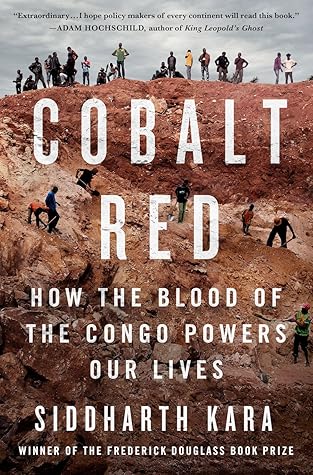More on this book
Community
Kindle Notes & Highlights
Read between
February 18 - March 10, 2024
On the contrary, across twenty-one years of research into slavery and child labor, I have never seen more extreme predation for profit than I witnessed at the bottom of global cobalt supply chains. The titanic companies that sell products containing Congolese cobalt are worth trillions, yet the people who dig their cobalt out of the ground eke out a base existence characterized by extreme poverty and immense suffering.
No one knew at the outset that the Congo would prove to be home to some of the largest supplies of almost every resource the world desired, often at the time of new inventions or industrial developments—ivory for piano keys, crucifixes, false teeth, and carvings (1880s), rubber for car and bicycle tires (1890s), palm oil for soap (1900s+), copper, tin, zinc, silver, and nickel for industrialization (1910+), diamonds and gold for riches (always), uranium for nuclear bombs (1945), tantalum and tungsten for microprocessors (2000s+), and cobalt for rechargeable batteries (2012+).
At no point in their history have the Congolese people benefited in any meaningful way from the monetization of their country’s resources. Rather, they have often served as a slave labor force for the extraction of those resources at minimum cost and maximum suffering.
Therein lies the great tragedy of the Congo’s mining provinces—no one up the chain considers themselves responsible for the artisanal miners, even though they all profit from them.
After her son was born, she started digging at Lake Malo. She said that prostitution and digging for cobalt were the same—“Muango yangu njoo soko.” My body is my marketplace.
We are not alone. Africa, Asia, and the free and liberated peoples in every corner of the globe will ever remain at the side of the millions of Congolese who will not abandon the struggle until the day when there will be no more colonizers and no more of their mercenaries in our country.


